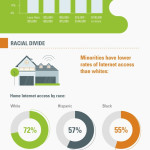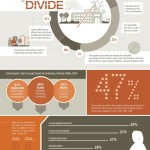• Overview
• Current Campaign
• Activities
• Multimedia
• Other Resources
• Related Blog Posts
Overview
The right to communications is a fundamental right in any democratic society. Extending that right to those that the private market does not adequately serve the if the goal of Digital Inclusion, also know as Universal Service
Universal Service: A Matter of Economic Justice
Communications is a human right ‐‐ a tool that connects us to our communities, helps to disclose injustice, and facilitate innumerable aspects of modern life. Since a 1997 General Synod resolution, the United Church of Christ has formally recognized that we need to ensure we do not become a society divided between “information rich” and “information poor,” which leaves struggling people without the tools to succeed in modern society. For almost 30 years, under the policy of “universal service,” federal communications policy has set funds aside to ensure that people could connect to the telephone network even if their financial circumstances or remote location might otherwise prevent them from doing so. And in 1996, universal service was expanded to help schools and libraries and rural health care providers connect to the Internet.
The “Lifeline” program, which provides a financial subsidy to low‐income people to help them afford telephone service, has recently come under attack, not for the important work that it does, but because a few bad actors have taken advantage of the program and used it for their own personal gain. The attacks are all the more upsetting because this program is not in need of curtailment ‐‐ rather it is in need of updating so that it can support the use of new technologies, such as high‐speed broadband Internet access, rather than simple voice telephone service.
While voice phone service is a minimum service necessary for everything from calling 9‐1‐1 to getting a job, the truth is that Americans are rapidly moving to broadband Internet for most of their communications needs. Unfortunately, the advent of high speed broadband is making the “digital divide” worse, as the least connected fall farther behind. Increasingly, people need Internet access to look for jobs, access Medicare, Social Security and other government benefits, and take full advantage of new health care portals under the Affordable Care Act. For example, the Wall Street Journal recently ran a story describing high school students who routinely study and do their homework at McDonald’s because it offers Internet access and their families cannot afford to subscribe at home.
….more?
Current Campaign
MORE INFO HERE
Activities
MORE ACTIVITIES HERE
Multimedia
Reforming Lifeline for the Broadband Era
FCC Clyburn Remarks on Lifeline @ New America Pt. 1
FCC Clyburn Remarks on Lifeline @ New America Pt. 2
Lifeline Telephone Calling Plans
Infographics
Other Resources
•https://www.fcc.gov/lifeline

